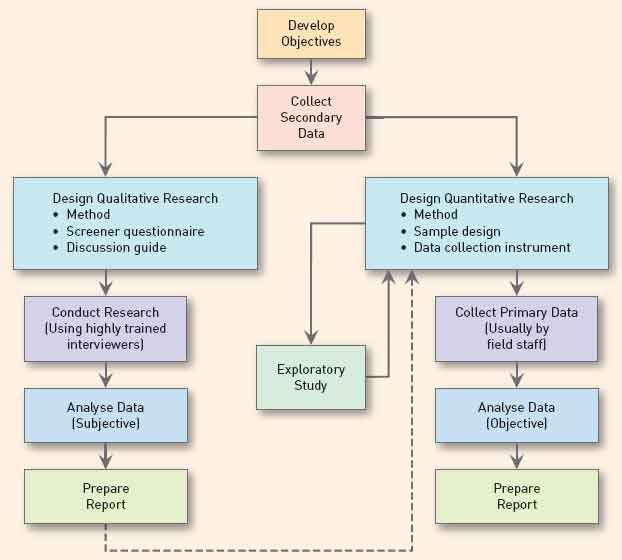Research Process
Consumer research plays a very important aspect, especially when a company decides to launch a new product into the market. Companies conduct market research to better understand the consumers, their needs and their satisfaction level.
After conducting various surveys and focus groups, companies analyze the consumer data and then make recommendations based on the results.
The following illustration explains the consumer research process −

Developing Research Objectives
The first step in the consumer research process is developing the research objectives which involves defining the purposes and objectives to ensure an appropriate design. A statement of objective helps to define the type and level of information needed.
Collect Secondary Data
There are two distinct sources of secondary data − internal and external. Always seek internal sources first. Most go straight to Google without considering the fact that data might exist within the organization itself. This can sometimes be in the ‘heads’ of the personnel.
External Sources
External sources are numerous. Consumer Generated Media (CGM), especially, has grown in importance as a data source. The key is to avoid spending too much time following ‘blind alleys’. This is where the time and cost can escalate sharply.
Directories
Country information
Published marketing research reports
News sources
CGM (Newsgroups, blogs, groups)
Internet – single search engines, and multiple search engines
Primary Research
Primary research is basically the original research. Here you yourself collect the information through various tools available. In primary research, you don’t tend to depend on any third parties. You may conduct interviews or surveys, observe, or even directly go to the object for collecting information.Quantitative Research
A quantitative research study is comprised of research design, the data collection methods, instruments to be used, and the sample design.Following are the three basic designs or approaches used for quantitative design −
Observational Research − In this method of observational research, the people or customers are observed effectively when they purchase a particular product. It helps the researcher to gain in-depth understanding of the relationship between the people and products by observing them while purchasing and using the product.
Experimentation − Experimentation is a type of research where only certain variables are manipulated while others are kept constant in order to encourage the change in the constant variable
Surveys − A survey is a method of research in which an interviewer interacts with respondents to obtain facts, opinions and attitudes.
Following are the various survey methods which are generally used −
Personal interview survey
Telephone survey
Mail surveys
Online surveys
Quantitative research data collection instruments
Data Collection Instruments for Quantitative Research Data
Questionnaire and Attitude Scale − For quantitative research the primary data collection instrument is a questionnaire and the most frequent one is attitude scale which is used to capture evaluative data.
Following are the important methods of data collection in the qualitative design techniques which are used in the initial stages of research.
In-Depth Interview − Depth interview is conducted in length and in a non-structured manner where the interviewer is highly trained and minimizes his own participation in the discussion once the general subject is discussed.
Focus Group − Focus group involves many respondents who interact with the analyst in a group discussion and focuses on a particular product.
Projective Techniques
Projective techniques are best used to understand the motives of people when they are unconsciously rational.
The analyst generally analyzes and reports his findings based on the responses received in qualitative research whereas in quantitative analysis, the researchers oversees the complete research, analyses the open ended questions, classifies the responses and systematically tabulate them.
